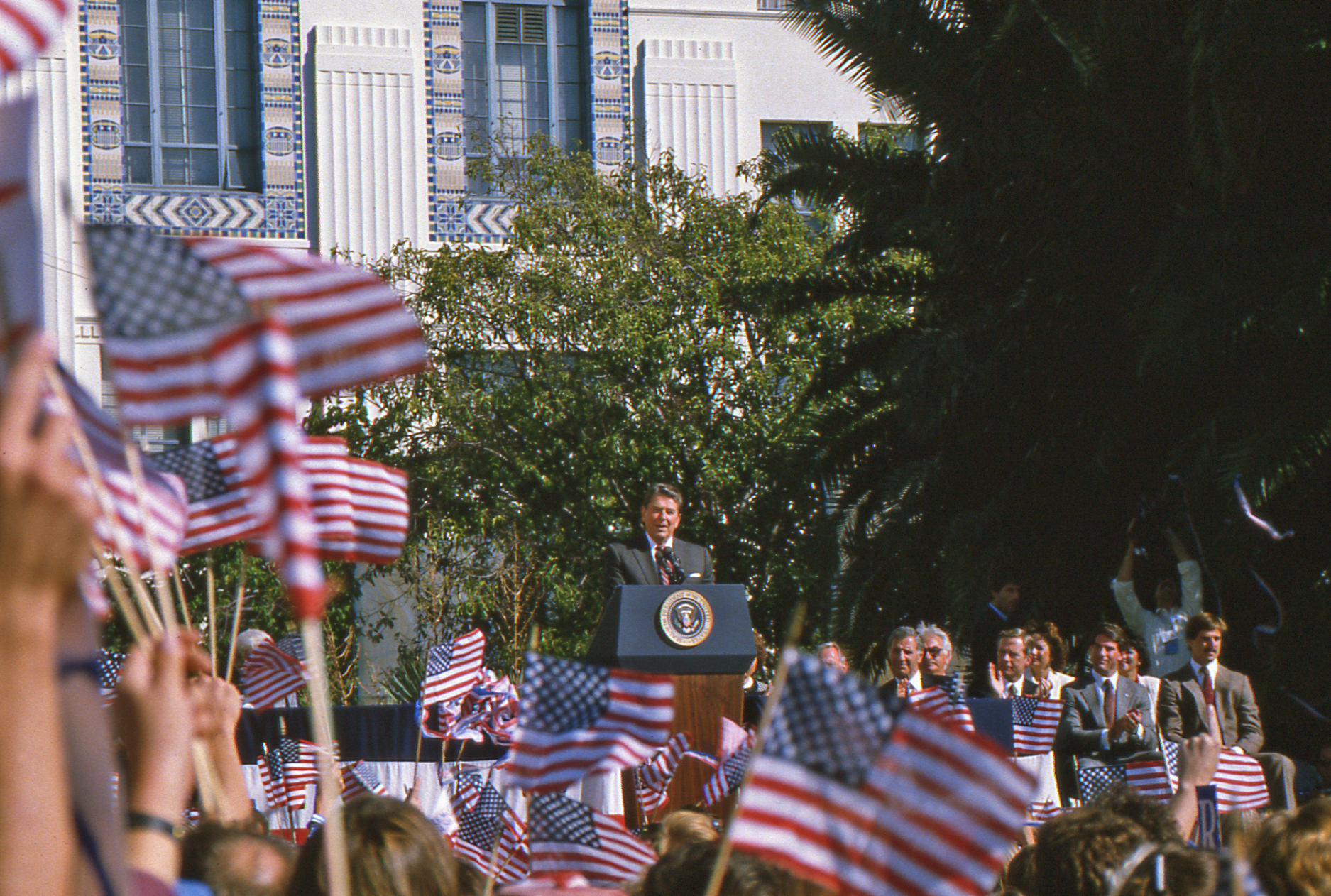Use this decades-old speechwriting technique to create powerful messages today
A former government speechwriter shares tips on this powerful storytelling tool.

Former President Ronald Reagan was a trendsetter not only with his fashion sense but with his ability to give moving, memorable speeches.
Reagan was the first president to invite a guest to his State of the Union address. In his 1982 speech, Reagan recognized Lenny Skutnik, a United States Congressional Budget Office employee who saved a woman stuck in the freezing Potomac River after an Air Florida Flight 90 plane carrying her crashed nearby.
Reagan described Skutnik’s rescue as “the spirit of American heroism at its finest.” Throughout his speech, Reagan touched on the country’s battle with a recession that led to unemployment, high-interest rates and homelessness, according to PBS.
Reagan had the weight of the nation on his shoulders as he corralled a beleaguered country facing this uphill battle. Reagan noted the problems were “no quick fix” and talked about how this country overcame “insuperable odds” before and can do it again. He brought Skutnik in as an example of what “quiet, everyday heroes” look like.
In subsequent State of the Union addresses, presidents followed Reagan’s lead by inviting and recognizing guests who represented American values and humanized their messages, according to TIME. Forever after, these were known as Skutniks.
Reagan’s speechwriter Aram Bakshian, Jr. said that he “wrote Lenny Skutnik into the finale” of Reagan’s speech to play up the hero aspect, according to the Miller Center.
“I wrote the passage that created the hero in the gallery ploy, which unfortunately has been milked to death since and overdone. I almost regret it.”
While Bakshian, Jr. may be sick of the tactic, it’s been used so frequently because it works. These Skutniks often resonate with audiences as their stories tug at heartstrings.
Michael Ricci, former director of communications for then-Maryland Governor Larry Hogan and former speechwriter and director of communications for John Boehner and Paul Ryan, told PR Daily that speechwriters can use Skutniks to connect the dots with audiences and their desire to relate to a hero in a speech.
Take listeners on a journey
Ricci, a partner at Seven Letter, a Washington, D.C.-based strategic communications firm, said to consider using intention and obstacle storytelling methods when writing speeches that feature Skutnik elements.
This storytelling structure features:
- A likable hero facing a challenge.
- The hero must overcome that challenge.
- The hero learns an inspirational moral.
Ricci said that former President Barack Obama used that technique during his 2011 State of the Union Address when he recognized a Pennsylvanian company that designed drilling equipment that rescued Chilean miners trapped underground.
“It was very similar to the original Lenny Skutnik story,” Ricci said. “The president laid out the story of the small company, he had the owner of the company in his box. And the moral that he drew was we do big things.”
Ricci said that these kinds of stories are the “gateway” to bigger-picture narratives.
But to turn these stories into action, you must identify the intention of the speech.
“Is it to pass a bill? Is it to reach a certain level of donations? Is it to … launch an initiative to modernize this international space station – some inspiring, clear, compelling intention?” Ricci said.
Then Ricci said to identify your obstacles, which, in the political context, is typically the opposing party.
But sometimes it’s not. It can be an obstacle everyone is facing. Like during COVID, Ricci said, the virus was the “clear villain.”
“Just something that provides tension, something, you have to overcome,” Ricci said.
It’s the speechwriter’s job to make the audience feel like they overcame that challenge together.
“What does it take to overcome it? And what lessons can be drawn from that journey?” Ricci said.
Finding your Skutnik
Incorporating a Skutnik into a speech may be easy but finding one can be tricky. Here are some of Ricci’s tips for finding an inspiring figure to share:
Do your homework
- Ask trusted sources who might know great stories of humble heroes. “Don’t just Google it. Sometimes these stories, you need to go out and find them,” Ricci said.
But you can find these gems online if you know where to look. Try reading human interest stories to find potential Skutniks.
Dig into the source’s background
- “When you find them, stress test them. Make sure they work, make sure they land,” Ricci advised. “Sometimes a story can be too good to be true.”
- Ricci adds that the stress test ensures that they aren’t a controversial figure and that they are interested in having their story shared in a speech.
“There’s no shortage of people … or shortage of opportunities to identify,” Ricci said.
Learn more speechwriting tips at Ragan’s Public Affairs & Speechwriting Virtual Conference on Feb. 21.
Sherri Kolade is a writer and conference producer at Ragan Communications. She enjoys watching old films, reading and building an authentically curated life. Follow her on LinkedIn. Have a great PR/comms speaker in mind for one of Ragan’s events? Email her at sherrik@ragan.com.







